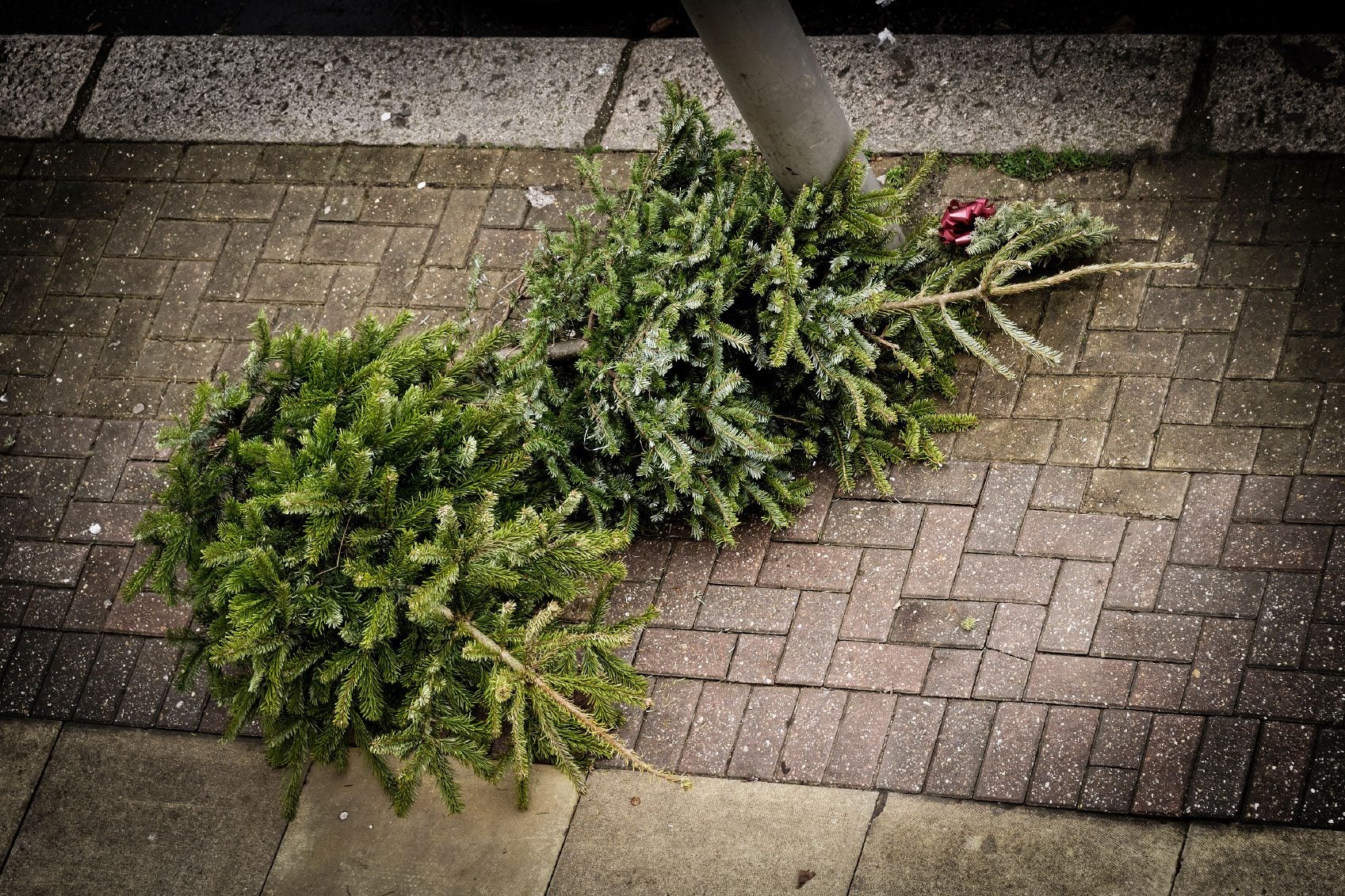
Santa Claus has come and gone and you have feted and feasted. Now all that remains are Christmas dinner leftovers, crumpled wrapping paper and a Christmas tree practically devoid of needles. Now what? Can you reuse a Christmas tree? If not, how do you go about with Christmas tree disposal?
Can You Reuse a Christmas Tree?
Not in the sense that it will be viable as a Christmas tree option next year, but there are many things that the tree can be used or repurposed for. Before you do anything, however, make sure all the lights, ornaments and tinsel have been taken off the tree. This can be hard to do, but these objects will not work well with any of the following recycling ideas. If you would like to continue to enjoy the tree post-Christmas season, use it as a shelter/feeder for birds and other wildlife. Tie the tree to a deck or a living tree near a window so you can watch all the action. The branches will provide shelter from cold and strong winds. Enjoy a second round of Christmas tree decorating by festooning the branches with slices of fruit, suet, strings of cranberries and seed cakes. Dangle peanut butter smeared pinecones along the tree's limbs. With such a smorgasbord of delicacies, you will have hours of fun watching birds and small mammals dart in and out of the tree for a snack. Also, some conservation groups use Christmas trees as wildlife habitats. Some state parks sink the trees in lakes to become fish habitats, providing shelter and food. Your old Christmas tree can also be “upcycled” and used as a soil erosion barrier around lakes and rivers that have unstable shorelines. Contact local conservation groups or state parks to see if they have such programs in your area.
How to Recycle a Christmas Tree
Along with the ideas mentioned above, there are other methods for disposing of your Christmas trees. The tree can be recycled. Most cities have a curbside pickup program that will allow you to have your tree picked up and then chipped. Check with your solid waste provider to see what size tree and in what condition it needs to be (for example, does it need to be stripped of limbs and cut and bundled into 4 foot or 1.2 meter lengths, etc.). The chipped mulch or ground cover is then used in public parks or private homes. If curbside pickup is not an option, your community may have a recycling drop off, mulching program or non-profit pickup. Still have questions about how to recycle a Christmas tree? Contact your Solid Waste Agency or other sanitation service for information regarding this method for disposing of your Christmas tree.
Additional Christmas Tree Disposal Ideas
Still looking for ways to dispose of the Christmas tree? You can use the branches to cover weather-sensitive plants in the yard. The pine needles can be stripped from the tree and used to cover muddy paths. You can chip the trunk as well to use a raw mulch to cover paths and beds. The trunk can then be dried for a few weeks and turned into firewood. Be aware that fir trees are filled with pitch and, when dried, can literally explode, so take great care if you are going to burn them. Finally, if you have a compost pile, you can certainly compost your own tree. Be aware that when composting Christmas trees, if you leave them in large pieces, the tree will take ages to break down. It is better to cut up the tree into small lengths or, if possible, shred the tree and then toss it in the pile. Also, when composting Christmas trees, it would be beneficial to strip the tree of its needles, as they are tough and, thus, resistant to composting bacteria, slowing the entire process. Composting your Christmas tree is a great way of repurposing it since it will, in turn, create nutrient rich soil for your garden. Some people say the acidity of the pine needles will affect the compost pile, but the needles lose their acidity as they brown, so leaving some in the pile will not affect the resulting compost.
Sign up for the Gardening Know How newsletter today and receive a free copy of our e-book "How to Grow Delicious Tomatoes".

Amy Grant has been gardening for 30 years and writing for 15. A professional chef and caterer, Amy's area of expertise is culinary gardening.
